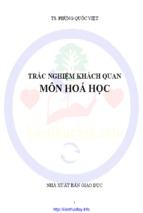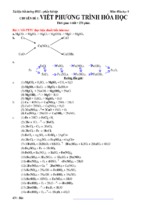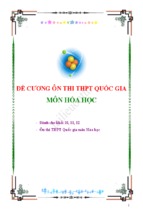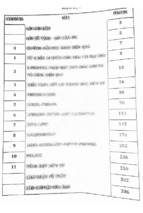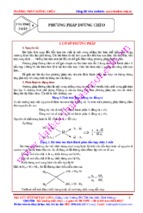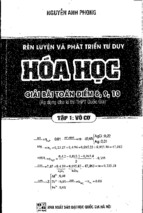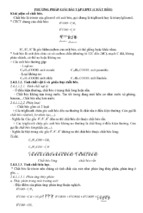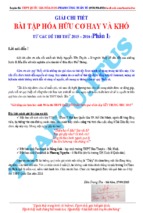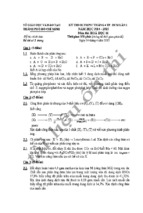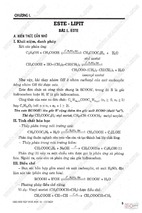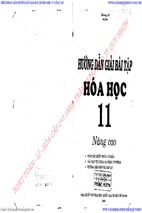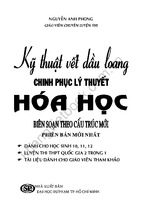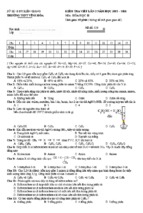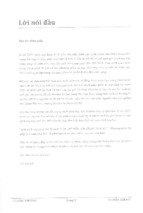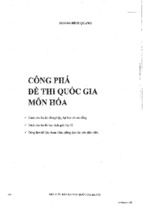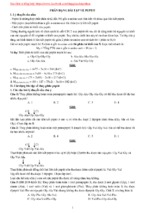Quaternary Dating
Methods
MIKE WALKER
Department of Archaeology and Anthropology
University of Wales, Lampeter, UK
Quaternary Dating Methods
Quaternary Dating
Methods
MIKE WALKER
Department of Archaeology and Anthropology
University of Wales, Lampeter, UK
Copyright © 2005
John Wiley & Sons Ltd, The Atrium, Southern Gate, Chichester,
West Sussex PO19 8SQ, England
Telephone
(+44) 1243 779777
Email (for orders and customer service enquiries):
[email protected]
Visit our Home Page on www.wiley.com
All Rights Reserved. No part of this publication may be reproduced, stored in a retrieval system or transmitted
in any form or by any means, electronic, mechanical, photocopying, recording, scanning or otherwise,
except under the terms of the Copyright, Designs and Patents Act 1988 or under the terms of a licence issued by
the Copyright Licensing Agency Ltd, 90 Tottenham Court Road, London W1T 4LP, UK, without the
permission in writing of the Publisher. Requests to the Publisher should be addressed to the Permissions
Department, John Wiley & Sons Ltd, The Atrium, Southern Gate, Chichester, West Sussex PO19 8SQ,
England, or emailed to
[email protected], or faxed to (+44) 1243 770620.
Designations used by companies to distinguish their products are often claimed as trademarks.
All brand names and product names used in this book are trade names, service marks, trademarks
or registered trademarks of their respective owners. The Publisher is not associated with any
product or vendor mentioned in this book.
This publication is designed to provide accurate and authoritative information in regard to the
subject matter covered. It is sold on the understanding that the Publisher is not engaged in
rendering professional services. If professional advice or other expert assistance is required, the
services of a competent professional should be sought.
Other Wiley Editorial Offices
John Wiley & Sons Inc., 111 River Street, Hoboken, NJ 07030, USA
Jossey-Bass, 989 Market Street, San Francisco, CA 94103-1741, USA
Wiley-VCH Verlag GmbH, Boschstr. 12, D-69469 Weinheim, Germany
John Wiley & Sons Australia Ltd, 33 Park Road, Milton, Queensland 4064, Australia
John Wiley & Sons (Asia) Pte Ltd, 2 Clementi Loop #02-01, Jin Xing Distripark, Singapore 129809
John Wiley & Sons Canada Ltd, 22 Worcester Road, Etobicoke, Ontario, Canada M9W 1L1
Wiley also publishes its books in a variety of electronic formats. Some content that appears in print may not be
available in electronic books.
Library of Congress Cataloging in Publication Data
Walker, M.J.C. (Mike J.C.), 1947–
Quaternary dating methods / Mike Walker.
p. cm.
Includes bibliographical references and index.
ISBN 0-470-86926-7 (hb : acid-free paper) — ISBN 0-470-86927-5 (pbk. : acid-free paper)
1. Geochronometry. 2. Geology, Stratigraphic—Quaternary. 3. Radioactive dating. I. Title.
QE508.W348 2005
551.7′01—dc22
2004029171
British Library Cataloguing in Publication Data
A catalogue record for this book is available from the British Library
ISBN-13 978-0-470-86926-0 (HB)
978-0-470-86927-7 (PB)
ISBN-10 0-470-86926-7 (HB)
0-470-86927-5 (PB)
Typeset in 10/12pt Times by Integra Software Services Pvt. Ltd, Pondicherry, India
Printed and bound in Great Britain by Antony Rowe Ltd, Chippenham, Wiltshire
This book is printed on acid-free paper responsibly manufactured from sustainable
forestry in which at least two trees are planted for each one used for paper production.
For John Lowe
Contents
Preface
xv
1 Dating Methods and the Quaternary
1.1 Introduction
1.2 The Development of Quaternary Dating
1.3 Precision and Accuracy in Dating
1.4 Atomic Structure, Radioactivity and Radiometric Dating
1.5 The Quaternary: Stratigraphic Framework and Terminology
1.6 The Scope and Content of the Book
Notes
1
1
2
5
7
9
12
15
2 Radiometric Dating 1: Radiocarbon Dating
2.1 Introduction
2.2 Basic Principles
2.3 Radiocarbon Measurement
2.3.1 Beta Counting
2.3.2 Accelerator Mass Spectrometry
2.3.3 Extending the Radiocarbon Timescale
2.3.4 Laboratory Intercomparisons
2.4 Sources of Error in Radiocarbon Dating
2.4.1 Contamination
2.4.2 Isotopic Fractionation
2.4.3 Marine Reservoir Effects
2.4.4 Long-Term Variations in 14C Production
2.5 Some Problematic Dating Materials
2.5.1 Lake Sediments
2.5.2 Shell
2.5.3 Bone
2.5.4 Soil
2.6 Calibration of the Radiocarbon Timescale
2.6.1 Dendrochronological Calibration
2.6.2 The INTCAL Calibration
2.6.3 Extending the Radiocarbon Calibration Curve
17
17
18
19
20
20
23
24
24
24
25
26
27
29
29
30
31
31
32
32
32
34
viii
Contents
2.6.4 Bayesian Analysis and Radiocarbon Calibration
2.6.5 Wiggle-Match Dating
2.7 Applications of Radiocarbon Dating
2.7.1 Radiocarbon Dating: Some Routine Applications
2.7.1.1 Dating of plant macrofossils: Lateglacial cereal
cultivation in the valley of the Euphrates
2.7.1.2 Dating of charcoal: a Holocene
palaeoenvironmental record from western
Germany
2.7.1.3 Dating of peat: a Holocene palaeoclimatic record
from northern England
2.7.1.4 Dating of organic lake mud: a multi-proxy
palaeoenvironmental record from Lake Rutundu,
East Africa
2.7.1.5 Dating of marine micropalaeontological records:
an example of a problem from the North Atlantic
2.7.1.6 Dating of marine shell: a Holocene aeolianite
from Mexico
2.7.1.7 Dating of bone: the earliest humans in the Americas
2.7.2 Radiocarbon Dating of Other Materials
2.7.2.1 Dating of textiles: the ‘Shroud of Turin’
2.7.2.2 Dating of old documents: the Vinland Map
2.7.2.3 Dating of lime mortar: medieval churches in Finland
2.7.2.4 Dating of hair: radiocarbon dates and DNA
from individual animal hairs
2.7.2.5 Dating of iron artefacts: the Himeji nail and
the Damascus sword
2.7.2.6 Dating of pottery: the earliest pottery in Japan
2.7.2.7 Dating of rock art: Palaeolithic cave paintings
in Spain and France
Notes
3 Radiometric Dating 2: Dating Using Long-Lived and
Short-Lived Radioactive Isotopes
3.1 Introduction
3.2 Argon-Isotope Dating
3.2.1 Principles of Potassium–Argon Dating
3.2.2 Principles of Argon–Argon Dating
3.2.3 Some Assumptions and Problems Associated with
Potassium–Argon and Argon–Argon Dating
3.2.4 Some Applications of Potassium–Argon and
Argon–Argon Dating
3.2.4.1 Potassium–argon and argon–argon dating of the
dispersal of Early Pleistocene hominids
3.2.4.2 40Ar/39Ar dating of anatomically modern Homo
sapiens from Ethiopia
35
37
37
37
38
38
41
41
43
45
47
47
48
49
51
51
52
52
53
54
57
57
58
58
59
59
61
62
62
Contents
Ar/39Ar dating of historical materials: the
eruption of Vesuvius in AD 79
3.2.4.4 40Ar/39Ar dating and geological provenancing
of a stone axe from Stonehenge, England
3.3 Uranium-Series Dating
3.3.1 Principles of U-Series Dating
3.3.2 Some Problems Associated with U-Series Dating
3.3.3 Some Applications of U-Series Dating
3.3.3.1 Dating the Last Interglacial high sea-level
stand in Hawaii
3.3.3.2 Dating of early hominid remains from China
3.3.3.3 Dating of a speleothem from northern Norway
3.3.3.4 Dating of fluvial terraces in Wyoming, USA
3.4 Cosmogenic Nuclide Dating
3.4.1 Principles of Cosmogenic Nuclide (CN) Dating
3.4.2 Sources of Error in CN Dating
3.4.3 Some Applications of CN Dating
3.4.3.1 Cosmogenic dating of two Late Pleistocene
glacial advances in Alaska
3.4.3.2 Cosmogenic dating of the Salpausselkä I formation
in Finland
3.4.3.3 Cosmogenic dating of Holocene landsliding,
The Storr, Isle of Skye, Scotland
3.4.3.4 Cosmogenic dating of alluvial deposits,
Ajo Mountains, southern Arizona, USA
3.5 Dating Using Short-Lived Isotopes
3.5.1 Lead-210 (210Pb)
3.5.2 Caesium-137 (137Cs)
3.5.3 Silicon-32 (32Si)
3.5.4 Some Problems in Using Short-Lived Isotopes
3.5.5 Some Dating Applications Using Short-Lived Isotopes
3.5.5.1 Dating a record of human impact in a lake
sequence in northern England
3.5.5.2 Dating a 500-year lake sediment/temperature
record from Baffin Island, Canada
3.5.5.3 32Si dating of marine sediments
from Bangladesh
Notes
3.2.4.3
ix
40
4 Radiometric Dating 3: Radiation Exposure Dating
4.1 Introduction
4.2 Luminescence Dating
4.2.1 Thermoluminescence (TL)
4.2.2 Optically Stimulated Luminescence (OSL)
4.2.3 Sources of Error in Luminescence Dating
4.2.4 Some Applications of Luminescence Dating
65
66
66
67
69
71
71
72
74
74
77
77
79
80
80
82
82
84
84
85
86
86
87
87
88
88
91
92
93
93
94
94
96
99
100
x
Contents
4.2.4.1 TL dating of Early Iron Age iron smelting
in Ghana
4.2.4.2 TL and AMS radiocarbon dating of pottery
from the Russian Far East
4.2.4.3 TL dating of burnt flint from a cave site in France
4.2.4.4 TL dating of the first humans in South America
4.2.4.5 OSL dating of young coastal dunes in the
northern Netherlands
4.2.4.6 OSL dating of dune sands from Blombos Cave,
South Africa: single and multiple grain data
4.2.4.7 OSL dating of fluvial deposits in the lower
Mississippi Valley, USA
4.2.4.8 OSL dating of marine deposits in Denmark
4.3 Electron Spin Resonance Dating
4.3.1 Principles of ESR Dating
4.3.2 Sources of Error in ESR Dating
4.3.3 Some Applications of ESR Dating
4.3.3.1 ESR dating of teeth from the Hoxnian
Interglacial type locality, England
4.3.3.2 ESR dating of mollusc shells from the
Northern Caucasus and the earliest humans in
eastern Europe
4.3.3.3 ESR dating of Holocene coral: an
experimental approach
4.3.3.4 ESR dating of quartz: the Toba super-eruption
4.4 Fission Track Dating
4.4.1 Principles of Fission Track Dating
4.4.2 Some Problems Associated with Fission Track Dating
4.4.3 Some Applications of Fission Track Dating
4.4.3.1 Fission track dating of glacial events in Argentina
4.4.3.2 Fission track dating of a Middle Pleistocene
fossiliferous sequence from central Italy
4.4.3.3 Dating of obsidian in the Andes,
South America, and the sourcing of artefacts
Notes
5 Dating Using Annually Banded Records
5.1 Introduction
5.2 Dendrochronology
5.2.1 Principles of Dendrochronology
5.2.2 Problems Associated with Dendrochronology
5.2.3 Dendrochronological Series
5.2.4 Applications of Dendrochronology
5.2.4.1 Dating a 2000-year temperature record for the
northern hemisphere
5.2.4.2 Dating historical precipitation records
100
101
102
103
104
104
107
108
109
109
110
110
111
112
113
113
114
115
116
116
116
117
117
119
121
121
122
122
123
125
127
128
128
Contents
5.3
5.4
5.5
5.6
5.2.4.3 Dating volcanic events
5.2.4.4 Dating archaeological evidence
Varve Chronology
5.3.1 The Nature of Varved Sediments
5.3.2 Sources of Error in Varve Chronologies
5.3.3 Applications of Varve Chronologies
5.3.3.1 Dating regional patterns of deglaciation in
Scandinavia
5.3.3.2 Dating prehistoric land-use changes
5.3.3.3 Dating long-term climatic and environmental changes
5.3.3.4 Varve sequences and the radiocarbon timescale
Lichenometry
5.4.1 Principles of Lichenometric Dating
5.4.2 Problems Associated with Lichenometric Dating
5.4.3 Lichenometry and Late Holocene Environments
5.4.3.1 Dating post-Little Ice Age glacier recession in Norway
5.4.3.2 Dating rock glaciers and Little Ice Age moraines
in the Sierra Nevada, western USA
5.4.3.3 Dating Late Holocene rockfall activity on a
Norwegian talus slope
5.4.3.4 Dating archaeological features on raised
shorelines in northern Sweden
Annual Layers in Glacier Ice
5.5.1 Ice-Core Chronologies
5.5.2 Errors in Ice-Core Chronologies
5.5.3 Ice Cores and the Quaternary Palaeoenvironmental Record
5.5.3.1 Dating climatic instability as revealed in the
Greenland ice cores
5.5.3.2 Dating rapid climate change: the end of the
Younger Dryas in Greenland
5.5.3.3 Dating long-term variations in atmospheric
Greenhouse Trace Gases
5.5.3.4 Dating human impact on climate as reflected
in ice-core records
Other Media Dated by Annual Banding
5.6.1 Speleothems
5.6.1.1 Dating a proxy record for twentieth-century
precipitation from Poole’s Cavern, England
5.6.1.2 Dating climate variability in central China
over the last 1270 years
5.6.2 Corals
5.6.2.1 Dating a 420-year-coral-based
palaeoenvironmental record from the
southwestern Pacific
5.6.2.2 Dating a 240-year palaeoprecipitation
record from Florida, USA
xi
129
130
132
133
135
136
136
136
139
140
141
142
142
143
144
144
146
147
148
149
150
151
151
152
154
155
156
156
156
157
158
158
158
xii
Contents
5.6.3 Molluscs
5.6.3.1 The development of a sclerochronology using
the long-lived bivalve Arctica islandica
5.6.3.2 The development of a ‘clam-ring’ master
chronology from a short-lived bivalve mollusc
and its palaeoenvironmental significance
Notes
6 Relative Dating Methods
6.1 Introduction
6.2 Rock Surface Weathering
6.2.1 Surface Weathering Features
6.2.2 Problems in Using Surface Weathering Features to
Establish Relative Chronologies
6.2.3 Applications of Surface Weathering Dating
6.2.3.1 Relative dating of Holocene glacier
fluctuations in the Nepal Himalaya
6.2.3.2 Relative dating of periglacial trimlines
in northwest Scotland
6.2.3.3 Relative dating of archaeological features
by Lake Superior, Canada
6.3 Obsidian Hydration Dating
6.3.1 The Hydration Layer
6.3.2 Problems with Obsidian Hydration Dating
6.3.3 Some Applications of Obsidian Hydration Dating
6.3.3.1 Dating of a Pleistocene age site, Manus
Island, Papua New Guinea
6.3.3.2 Dating of fluvially reworked sediment in Montana, USA
6.4 Pedogenesis
6.4.1 Soil Development Indices
6.4.2 Problems in Using Pedogenesis as a Basis for Dating
6.4.3 Some Applications of Dating Based on Pedogenesis
6.4.3.1 Relative dating of moraines in the Sierra
Nevada, California
6.4.3.2 Dating glacial events in southeastern Peru
6.5 Relative Dating of Fossil Bone
6.5.1 Post-Burial Changes in Fossil Bone
6.5.2 Problems in the Relative Dating of Bone
6.5.3 Some Applications of the Relative Dating of Bone
6.5.3.1 Fluoride dating of mastodon bone from an
early palaeoindian site, eastern USA
6.5.3.2 Chemical dating of animal bones from Sweden
6.6 Amino Acid Geochronology
6.6.1 Proteins and Amino Acids
6.6.2 Amino Acid Diagenesis
6.6.3 Problems with Amino Acid Geochronology
160
160
162
162
165
165
166
166
167
168
168
168
170
172
173
173
174
174
176
176
176
177
178
178
178
180
181
181
182
182
182
184
185
186
187
Contents
6.6.4 Applications of Amino Acid Geochronology
6.6.4.1 Dating and correlation of the last interglacial
shoreline (~MOI substage 5e) in Australia using
aminostratigraphy
6.6.4.2 Quaternary aminostratigraphy in northwestern
France based on non-marine molluscs
6.6.4.3 Dating the earliest modern humans in southern
Africa using amino acid ratios in ostrich eggshell
6.6.4.4 Dating sea-level change in the Bahamas over
the last half million years
Notes
7 Techniques for Establishing Age Equivalence
7.1 Introduction
7.2 Oxygen Isotope Chronostratigraphy
7.2.1 Marine Oxygen Isotope Stages
7.2.2 Dating the Marine Oxygen Isotope Record
7.2.3 Problems with the Marine Oxygen Isotope Record
7.3 Tephrochronology
7.3.1 Tephras in Quaternary Sediments
7.3.2 Dating of Tephra Horizons
7.3.3 Problems with Tephrochronology
7.3.4 Applications of Tephrochronology
7.3.4.1 Dating the first human impact in New Zealand
using tephrochronology
7.3.4.2 Dating and correlating events in the North Atlantic
region during the Last Glacial–Interglacial transition
using tephrochronology
7.3.4.3 Dating Middle Pleistocene artefacts and
cultural traditions in East Africa using
tephrostratigraphy
7.3.4.4 Dating Early and Middle Pleistocene glaciations
in Yukon by tephrochronology
7.4 Palaeomagnetism
7.4.1 The Earth’s Magnetic Field
7.4.2 The Palaeomagnetic Record in Rocks and Sediments
7.4.3 Magnetostratigraphy
7.4.3.1 Polarity changes and the palaeomagnetic timescale
7.4.3.2 Secular variations
7.4.3.3 Mineral magnetic potential
7.4.4 Some Problems with Palaeomagnetic Dating
7.4.5 Applications of Palaeomagnetic Dating
7.4.5.1 Dating lake sediments using palaeosecular variations
7.4.5.2 Palaeomagnetic correlations between Scandinavian
Ice Sheet fluctuations and Greenland
ice-core records
xiii
188
189
189
191
192
195
197
197
198
199
199
201
202
202
204
205
207
207
209
209
211
213
214
215
216
216
216
219
220
221
221
222
xiv
Contents
7.4.5.3 Palaeomagnetic dating of the earliest
humans in Europe
7.4.5.4 Palaeomagnetic dating of the Sterkfontein
hominid, South Africa
7.5 Palaeosols
7.5.1 The Nature of Palaeosols
7.5.2 Palaeosols as Soil-Stratigraphic Units
7.5.3 Some Problems with Using Palaeosols to
Establish Age Equivalence
7.5.4 Applications of Palaeosols in the Establishment of Age
Equivalence
7.5.4.1 Buried palaeosols on the Avonmouth Level,
southwest England: stratigraphic markers
in Holocene intertidal sediments
7.5.4.2 The Valley Farm and Barham Soils: key
stratigraphic marker horizons in
southeast England
7.5.4.3 Correlation between the Chinese
loess–palaeosol sequence and the deep-ocean
core record for the past 2.5 million years
Notes
223
224
225
227
228
229
230
230
231
233
235
8 Dating the Future
8.1 Introduction
8.2 Radiometric Dating
8.3 Annually Banded Records
8.4 Age Equivalence
8.5 Biomolecular Dating
Notes
237
237
237
240
242
243
244
References
Index
245
279
Preface
In a letter to Thomas Manning in 1810, Charles Lamb wrote: ‘Nothing puzzles me more
than time and space; and yet nothing troubles me less, as I never think about them.’ All of
us working in the field of Quaternary science would, I suspect, tend to agree with the first
part of this statement but take issue over the second. I for one have always been fascinated
by time and, in particular, by the way in which we are able to assign ages to events in the
distant past. My family and friends have been amused and intrigued in equal measure by
me talking, with apparent confidence and authority, about the earth being formed 4.5 billion
years ago, or the present warm period within which we live lasting 11 500 yrs. ‘But how
can you be so sure?’ is the usual question. One of my aims in writing this book is to show
them that there are indeed ways in which we can date the past and, moreover, that we can
do so with an ever-increasing sense of assurance. My principal purpose, however, is to
describe the various dating techniques that are routinely employed in Quaternary science
in a way that is comprehensible to both undergraduate students and interested lay-people
alike. I have therefore tried to avoid using mathematical formulae, although in the first
chapter I felt it necessary to cover some of the basics of chemistry in order to provide the
groundwork for what comes later. I have also orientated the book towards the practical
aspects of dating by basing it around specific examples. Hopefully, this approach will
appeal to students and others with a non-scientific background but, at the same time, will
not appear to those who are fortunate in possessing a stronger scientific pedigree to be
‘dumbing down’. Above all, however, my aim is to encourage readers (unlike Charles
Lamb) to think a little more about the past and to recognise the importance of being able
to frame the momentous events of recent earth and human history within a reasonably
secure temporal framework.
Throughout the book I have drawn on a previous volume that I wrote with John Lowe
(Reconstructing Quaternary Environments, 1997, Addison-Wesley-Longman, London).
I make no apologies for this because I know that book has been, and continues to be,
widely used at undergraduate and postgraduate levels in both Britain and abroad. I hope
that this new book on Quaternary Dating Methods will find an equally wide readership.
John and I are about to embark on the third edition of Reconstructing Quaternary Environments (due 2006), and during the course of preparing that revision, I hope I will be
able to reciprocate and that some of the material contained in the following pages will
find its way into Lowe and Walker Mark III. The text also includes a large number of
references. Some might find that this disrupts the flow of the narrative, but I felt that it
xvi
Preface
was important not only to acknowledge the sources of material upon which I have drawn
but, equally importantly, to point the reader in the direction of this work so that those who
might be interested in taking matters further will be able to do so.
It is customary in a Preface to express thanks to those who have assisted either directly
or indirectly in the production of the book, and I do not intend to depart from that
practice. Over the last 15 years or so, I have enjoyed the national and international collaboration, and friendship, of many colleagues, first through the North Atlantic Seaboard
Programme of IGCP-253, and more recently through the INTIMATE (Integration of
ice-core, marine and terrestrial records) Programme of INQUA (International Quaternary
Union). I am particularly appreciative of the time that I have spent at a number of different meetings with, amongst others, Hilary Birks, Sjoerd Bohncke, Svante Björck, Russell
Coope, Les Cwynar, Irka Hajdas, Jan Heinemeir, Wim Hoek, Konrad Hughen, Sigfus
Johnsen, Karen-Luise Knudsen, Nalan Koç, Thomas Litt, Jørgen Peder Steffensen, Chris
Turney, Bas van Geel and Barbara Wohlfarth. My work with the Natural Environmental
Research Council, formerly as a member and subsequently as chairman of the NERC
Radiocarbon Facilities Committee, and latterly as chairman of the NERC AMS (Accelerator
Mass Spectrometry) Strategy Group, has brought me into contact with colleagues at the
East Kilbride and Oxford Radiocarbon Dating Laboratories, notably Chris Bronk-Ramsay,
Charlotte Bryant, Doug Harkness, Robert Hedges and Tony Fallick, whose company
I have enjoyed and from whom I have learned a great deal. I should also like to thank Lin
Kay and Chris Franklin at NERC for supporting me in my role as Committee Chairman.
Finally, I am grateful to my colleagues in the Department of Archaeology and Anthropology,
University of Wales, Lampeter, especially David Austin and John Crowther, for providing
such a congenial working environment over the past four years, and to the university
itself for allowing me a period of study leave during which much of the first draft of the
book was completed.
In writing this book, I have constantly been aware of the fact that I am approaching the
material as a member of the user community. I am not an expert in the technical aspects
of dating, and hence I have prevailed upon colleagues who know far more about these
matters than I ever will to read what I have written and to show me where I have gone
wrong. I am deeply indebted to Tim Atkinson, Simon Blockley, Charlotte Bryant, Tony
Fallick, Rob Kemp, Olav Lian, Danny McCarroll, James Scourse, Mike Summerfield,
Chris Turney and John Westgate for their careful scrutiny and constructive critical
appraisal of various sections of the text; I simply could not have completed this book
without their assistance. It goes without saying, however, that any remaining errors are
my own. Several friends and colleagues have provided me with photographs, for which I
am most grateful, and Phil Gibbard and Richard Preece helped considerably in the compilation of Figure 1.4. I should also like to thank Sally Wilkinson, Keily Larkins, Lynette James
and the staff in the production department of John Wiley. Last, and by no means least,
I would like to express my gratitude to my wife, Gro-Mette, who has not only been a constant source of encouragement, but who has also read the draft text from cover to cover,
and has provided many valuable inputs along the way.
One name is missing from the above list. As colleagues within the Quaternary
community will know, for more than 30 years I have worked in collaboration with John
Lowe. We first met as postgraduate students in the University of Edinburgh and since
then we have produced more than 50 joint publications. I have no doubt whatsoever that
Preface
xvii
John could have written this book and, I suspect, he might well have made a better fist of
it. Nevertheless, I hope he will find some of the material in the following pages of interest
and that he will enjoy reading it. Not only have John and I been close academic
colleagues, but we have also remained firm friends, and in acknowledgement of this
I would like to dedicate the book to him.
Mike Walker
October, 2004

